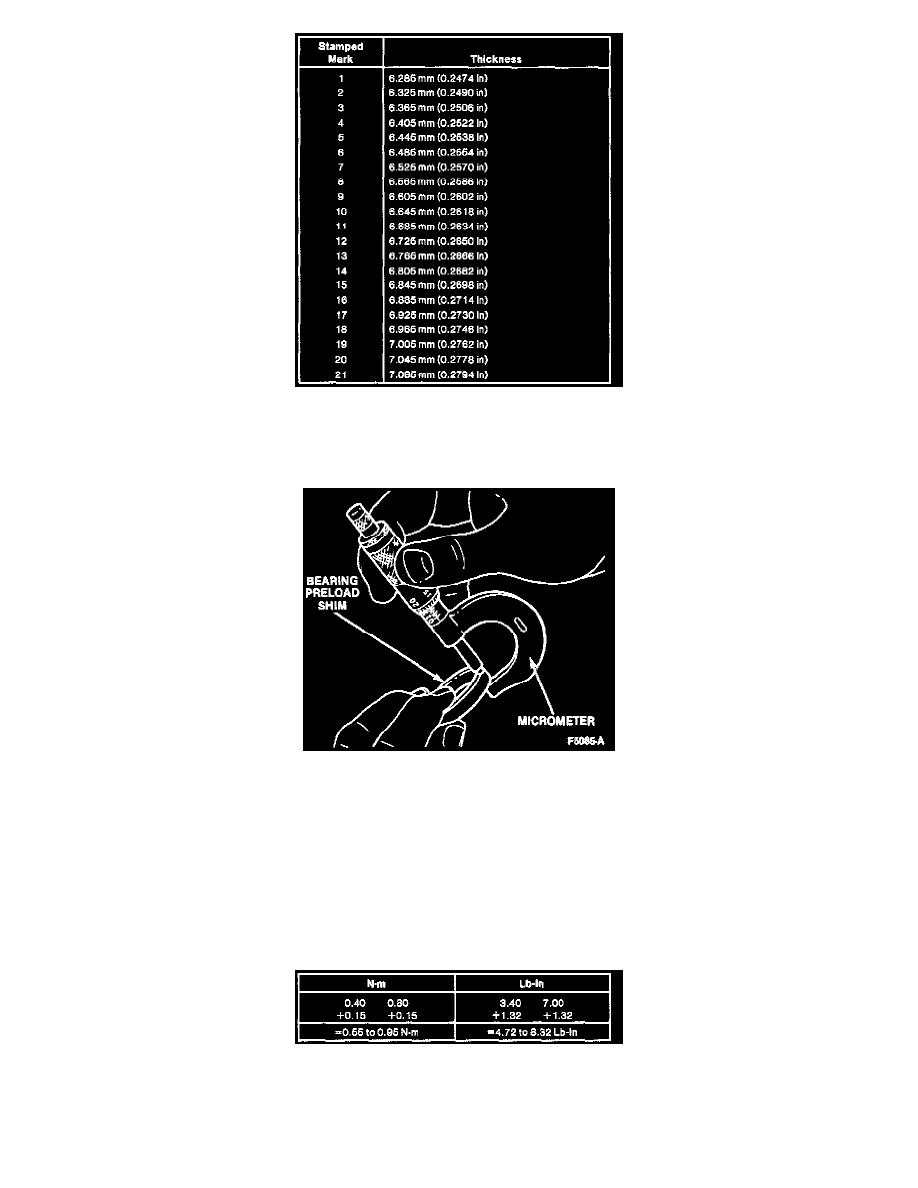Capri L4-1597cc 1.6L DOHC Turbo (1991)

Bearing Spacer Thickness Chart
Each bearing spacer has been assigned a numerical code that identifies its thickness. The code is stamped into the outer diameter of the spacer.
The numbers range from 1 to 21 with 1 being the THINNEST spacer.
Measure The Spacer With A Micrometer
If the number is not legible, measure the spacer with a micrometer and compare it to the chart to determine which number it is.
Changing the spacer thickness by one number, either higher or lower, will change bearing preload by 0.2-0.4 N.m(1.7-3.5 lb-in).
EXAMPLE A: Bearing preload TOO LOW-THINNER spacer required.
(1).Measured Preload: 0.15 N.m(1.32 lb-in).
(2).Spacer Thickness: 11.
(3).Required Spacer: 9.
A change of two will change bearing preload by 0.4-0.8 N.m (3.4-7.0 lb-in).
2 x 0.2 to 0.4 = 0.4 to 0.8.
(2 x 1.7 to 3.5 = 3.4 to 7.0).
Example
When added to the existing preload, the measured preload will now be 0.55 to 0.95 N.m(4.72 to 8.32 lb-in).
EXAMPLE B: Bearing preload TOO HIGH-THICKER spacer required.
(1).Measured Preload: 1.9 N.m(16.82 lb-in).
